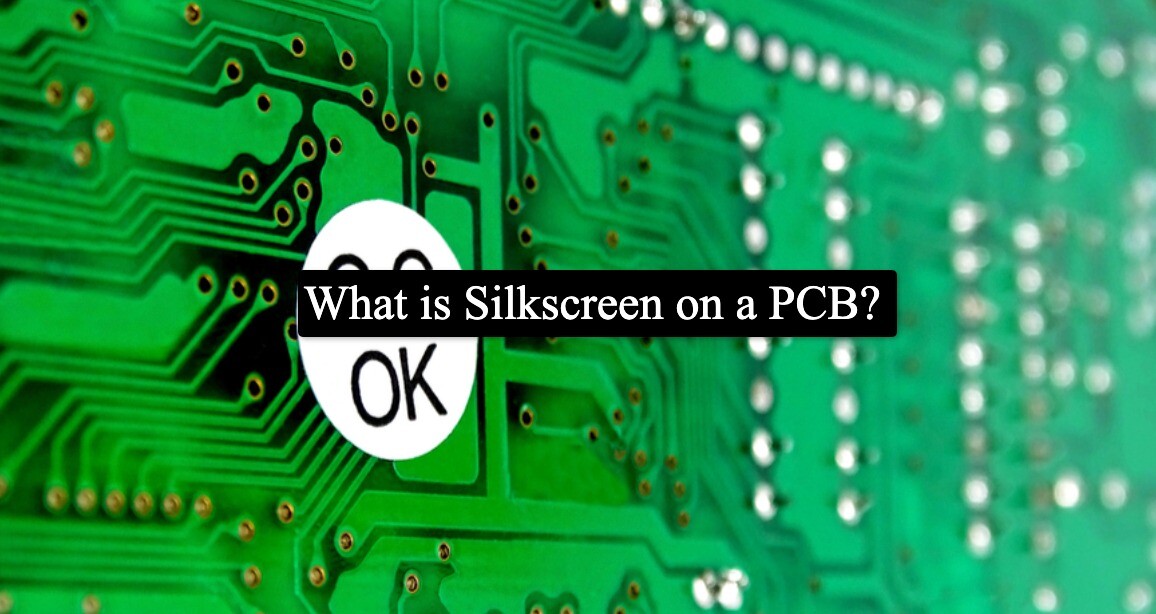
What is Silkscreen on a PCB?
The Silkscreen on a PCB is the first layer trace that works as a reference indicator to place the components at the appropriate places on a Printed Circuit Board (PCB).
Silkscreen PCB
The Silkscreen PCB aims to help you distinguish the PCB components, test points, warning symbols, and other parts of the PCB. First, however, you will find that people would apply the Silkscreen on the component side. Today, the users apply the Silkscreen on soldering side that includes manufacturers & engineers. The PCB Silk Screen Printing comes to you with an epoxy ink comprising colors like yellow, white, black, red, & many other colors.
What is the importance of the Silkscreen PCB to assembly?
Though the Silkscreen has nothing to do with the functionality of the Printed Circuit Board, the PCB Silkscreen provides information on
- Warning Symbols – The warning symbols indicate the parameters on the high voltage points that you need to avoid or handle.
- Polarity Indicators – It helps you to trace the polarized component’s orientation.
- Locating the parts via reference designators
- It helps in identifying the test points and unique numbers for each board.
- Reference indicators – It helps in identifying the component types via BOM. The Pin 1 indicator helps you to connect the pins to the suitable pads in the footprint. The leading pattern of the component outline would show the placement of a component. The polarity indicators provide you with the polarized component’s orientation
- Pin 1 indicator – It indicates the connection of pins on the correct pads of the footprints.
- Component Online – It enables you to place the components on PCB through indications.
The Component Online wouldn’t be essential for simpler components having a smaller number of pads. However, you would need them for general placement. But you can’t miss out on indicators, Pin 1, Polarity indicators.
The PCB Silkscreen also assists the engineers, technicians, and the manufacturers with the locations where you would need to take measurements at the time of testing and troubleshooting process that include:
- Test points: It helps indicate the board’s location with known values, which would be helpful when you identify the problems with board operations.
- Part Numbers: It helps you to get the device information in the absence of a datasheet.
What are the methods of silk screen printing?
The Silkscreen PCB printing offers you some of the Silk Screen printing methods.
- Liquid Photo Imaging – You can use Liquid Photo Imaging when the line widths exceed four mils. It has some of the shared similarities with the process followed for the solder mask’s application. The liquid photo-imageable epoxy would cover the lamination & get exposed to ultra-violet light after the development of the Silk Screen Circuit Board gets complete. The LPI gives you a better quality of screening & higher resolution of images and texts through it consumes more time & ink than Direct Legend Printing & Manual Printing.
- Direct Legend Printing – If you seek a better quality irrespective of the cost, Direct Legend Printing would be the right choice. In this technique, people would extensively use acrylic ink, applied directly on a raw PCB via CAD data. The ultra-violet light cures the printed ink. The users do the PCB Silk Screen Printing at the time of fabrication. However, you can mainly use DLP for processing the PCB assembly steps, referring to mounting the components.
- Manual Screen Printing: You can opt for Manual Screen Printing when the tolerance level of registration equals 0.005″ or the line width exceeds 0.007.” One would perform Manual Screen Printing with the help of stencils that comprises texts & traces.
- The process would involve converting the traces to nylon. Then, the stencil on the layer or laminate directs the ink accordingly.
- The next step involves the curing of ink in the baking oven. Manual Screen Printing is one of the easiest methods to create a Silkscreen layer that supports all types of texts.
What are the factors to keep in mind while designing a silkscreen for your PCB?
When you select a Silkscreen Circuit Board, you need to understand your requirements to make the right choice. If you have a good knowledge of PCB Silkscreen, it would be better for you to approach a manufacturer on whom you can trust.
If you are looking for PCB Silkscreen Printing at your desired budget & high performance, you can get assistance from a reliable engineer. First, however, you need to know the pitfalls of the equipment that you select. Here are some of the factors that you need to consider while buying the device.
- Does the Silkscreen restrict you to one side for cost reduction?
- What type of ink would you require to make the Silkscreen stand out?
- What is the cost of Direct Legend Printing and Liquid Photo Imaging? Is it worth the money?
- The artwork of the Silkscreen
All these factors would help you decide on the font size, clearance spacing, color, & many others.
Silkscreen on your PCB in Absolute PCB assembly
When you opt for a Silkscreen on your PCB in Absolute PCB assembly, it would be better for you to approach a person that you know in person. Though you may find the head offices outside the country, you can interact with the product’s vendor through phone or online for more information. You need to involve the CM with PCB assembly, technicians, & experienced end-users while testing the product &to resolve the issues if you find any of them.

